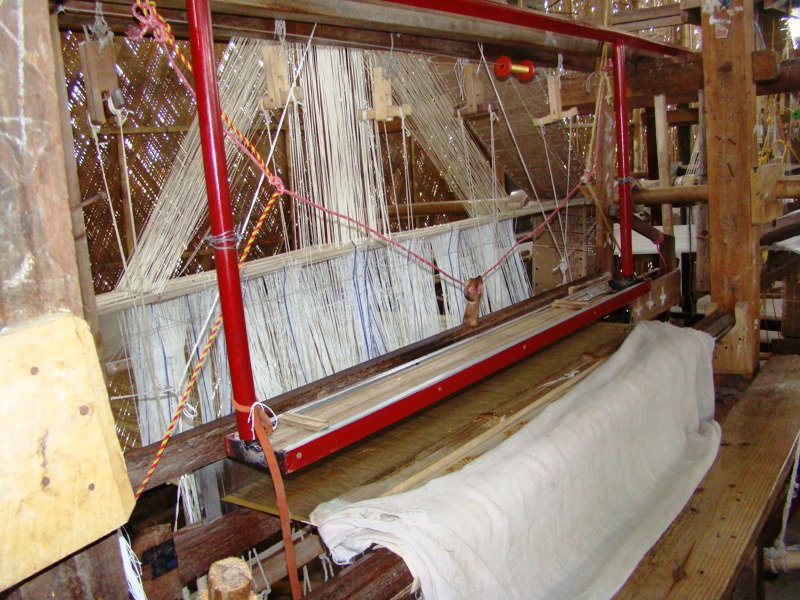
( National Innovation Foundation - India )
Extra Weft Handloom Machine
By : Mr Dipak Bharali,
Kamrup,
Assam
Innovation Description
Profile
Innovator Mr. Dipak Bharali hails from Kamarupa district of Assam.
Purpose
Shri. Dipak has developed a machine that ensures weaving of
better quality fabrics.
Technical details
The device consists of three
components 1. Base frame 2. Magnet bearing shaft and 3. Specially design
bobbin. A base frame is a U shaped wooden frame with two small elevated sidewalls. The upper side and both ends of the frame are kept open. The shaft
facilitated with a pair of magnets at equal intervals fits into the slot of the
base frame, and the base frame act as a rail to make the shaft move both ways.
The base of the frame is covered by a synthetic cloth with a woolly surface and the
shaft with narrow wooden frame. The magnets fitted at the lower surface of the
shaft are specially designed magnets. The magnets are placed in pairs facing
each other at equal intervals and the arrangement or the distance between the
magnets depends upon the required design pattern of the fabric. There are two
protuberances at each end of the shaft, serving as locks to prevent the shaft
from moving beyond a limited distance. The shaft fits perfectly into the slot
of the base frame and sits on top of the base surface cloth. Once fitted into
the slot, then the shaft can slide both ways. The specially designed bobbin has
two magnet sensitive rollers, fitted with small bearings inside. These two
rollers are connected by a round shaft made up of a hollow plastic pipe. The
bobbin is quite similar to a dumbbell, in terms of appearance. The weft
thread is filled into the plastic shaft, in between the two movable rings. On
filling of weft thread lasts for a whole fabric. The magnet sensitive rollers on the bobbin allow each bobbin to stick the designed magnet pieces attached to
the shaft separated by the base surface. The shaft fitted with magnets
slides on the base frame and the bobbins attached to it also drag from one side to
other.
Benefits
Saving time and human efforts. No
skilled person is required to operate this machine. Better quality fabrics are achieved.
Suggested Reading(s):
Adanur, S., & Mohamed, M. H. (1988). Weft
insertion on air-jet looms: velocity measurement and influence of yarn
structure part I: experimental system and computer interface. Journal of the Textile Institute, 79(2), 297-315.
Adanur, S., & Mohamed, M. H. (1988). Weft
insertion on air-jet looms: velocity measurement and influence of yarn
structure part II: effects of system parameters and yarn structure. Journal of the Textile Institute, 79(2), 316-329.
Bajpeyi, C. M., Padaki, N. V., & Mishra,
S. N. (2010). Review of silk handloom weaving in Assam. Textile Review, 29-35.
Lord, P. R., & Mohamed, M. H. (1982). Weaving: Conversion of Yarn to Fabric. Elsevier.
Vangheluwe, L. (1999). Air-jet weft
insertion. Textile Progress, 29(4), 1-63.
Zefrehyee, A. A., Nosraty, H., & Aghajani,
M. (2013). Design and implementation of weft density feedback control system
on weaving loom. In The 3rd International Conference on Control,
Instrumentation, and Automation (pp. 296-300). IEEE.
For More Details Please Contact on enquiry[at]nifindia[dot]org